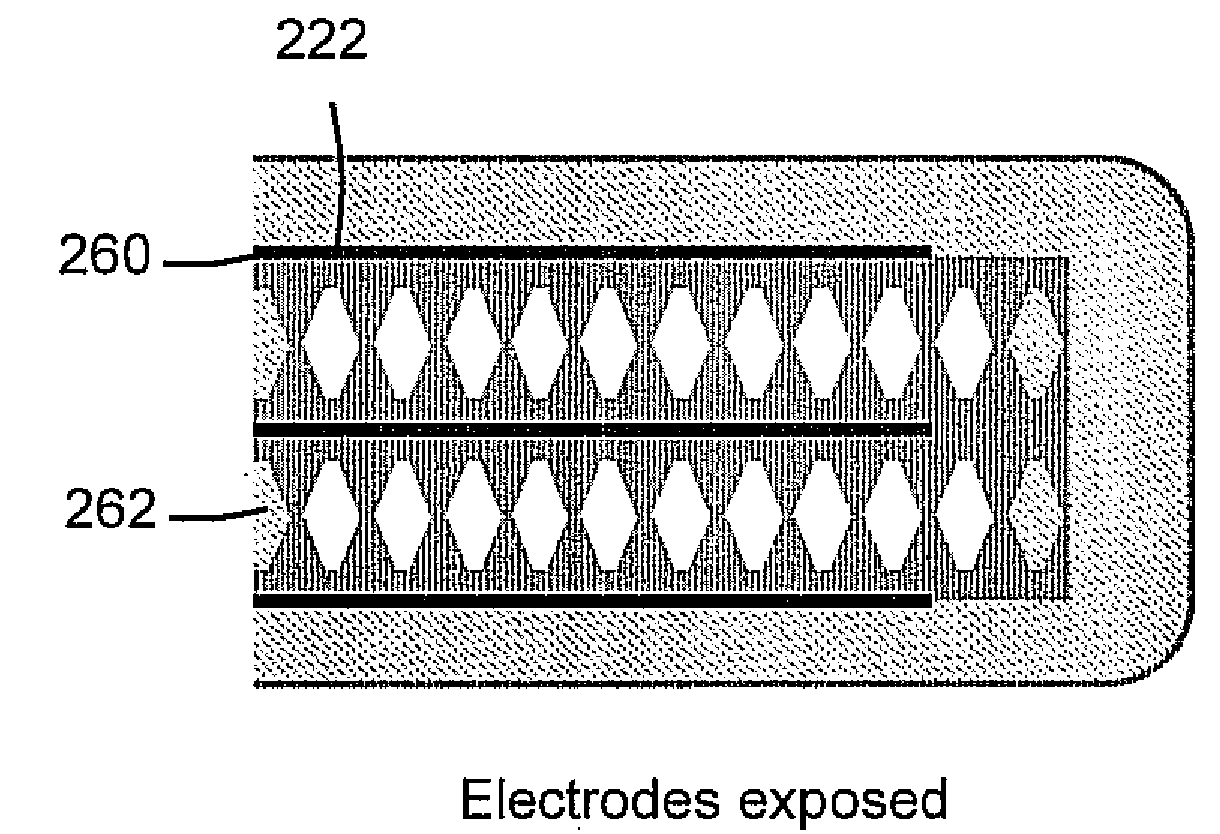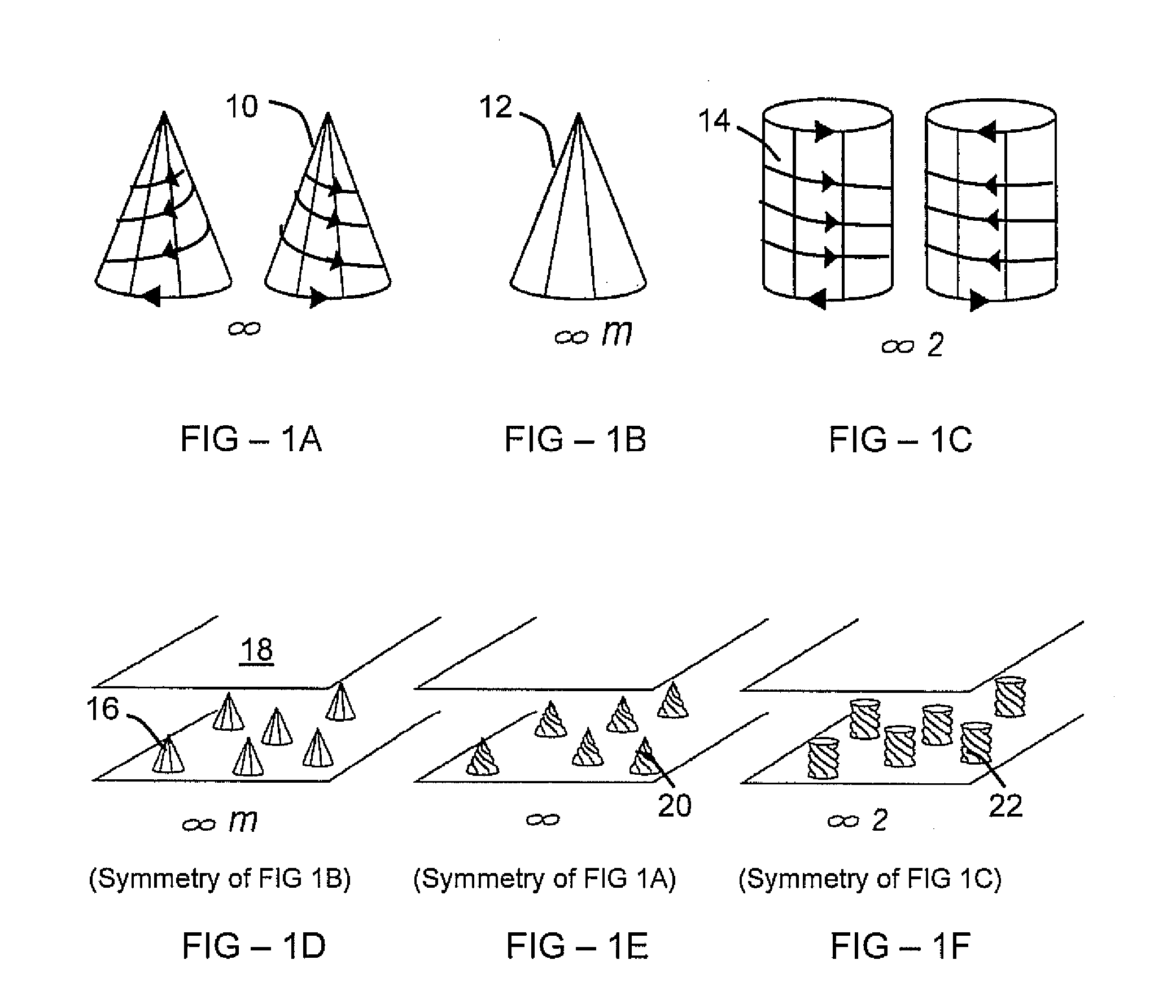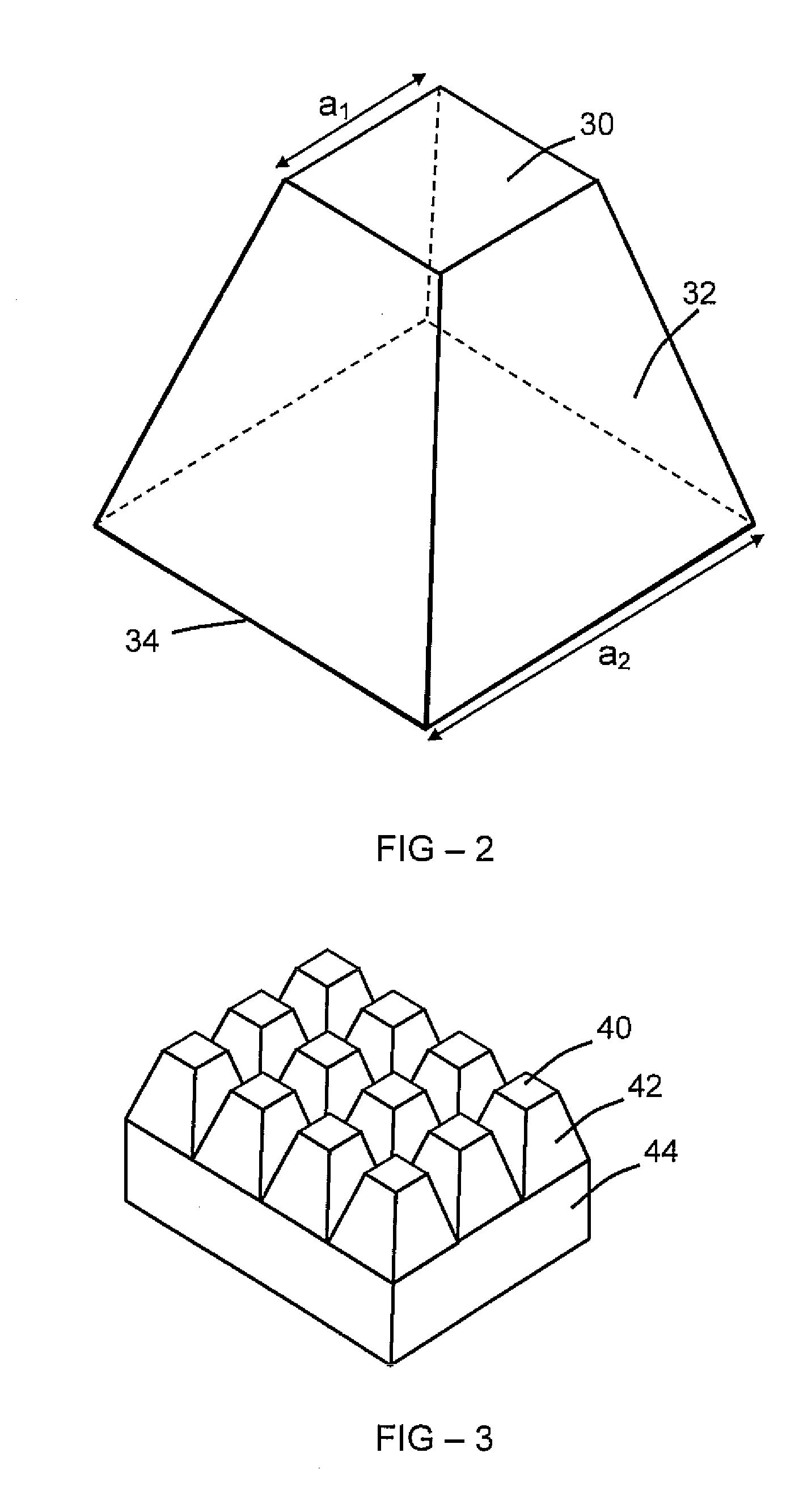Piezoelectric materials based on flexoelectric charge separation and their fabrication
a technology of flexoelectric charge separation and piezoelectric materials, applied in the field of piezoelectric materials, can solve the problems of difficult to find any better materials, difficult in conventional piezoelectrics to break the connection between direct and converse effects, and severe limits on material choices available, etc., to achieve the effect of not significantly reducing the stress gradient, easy fabrication, and high sensitivity
- Summary
- Abstract
- Description
- Claims
- Application Information
AI Technical Summary
Benefits of technology
Problems solved by technology
Method used
Image
Examples
example composite
[0066 materials according to embodiments of the present invention include a first material having a shape, for example a truncated cone (frustoconical shape), other shape representing the symmetry of Curie group ∞m as shown in FIG. 1B, or other shape allowing piezoelectric coefficients within an isotropic material. Other examples include a simple 0-3 composite preserving ∞m piezoelectrically active symmetry. Other examples include pyramids (in particular truncated pyramids), and the like. The base shape of a pyramid may be triangular, square, rectangular, or other shape.
[0067]An example composite comprises oriented truncated pyramidal or truncated conical shaped elements of a first material in a matrix of a second material, where the two materials are elastically dissimilar. In representative examples, the first and second materials are both dielectrics, and the first or second material may be a fluid such as air.
[0068]Oriented shaped elements having at least one surface angled with...
PUM
| Property | Measurement | Unit |
|---|---|---|
| Angle | aaaaa | aaaaa |
| Electrical conductor | aaaaa | aaaaa |
| Mechanical properties | aaaaa | aaaaa |
Abstract
Description
Claims
Application Information
 Login to View More
Login to View More - R&D
- Intellectual Property
- Life Sciences
- Materials
- Tech Scout
- Unparalleled Data Quality
- Higher Quality Content
- 60% Fewer Hallucinations
Browse by: Latest US Patents, China's latest patents, Technical Efficacy Thesaurus, Application Domain, Technology Topic, Popular Technical Reports.
© 2025 PatSnap. All rights reserved.Legal|Privacy policy|Modern Slavery Act Transparency Statement|Sitemap|About US| Contact US: help@patsnap.com



